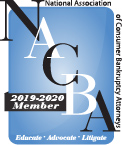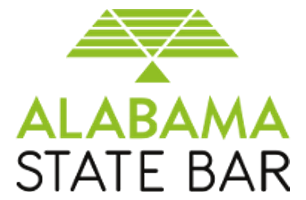Looking to put a bad credit history behind you?
A successful discharge of your debt in a Chapter 7 or Chapter 13 bankruptcy proceeding is the best way to move forward from an unfavorable credit history.
A bankruptcy discharge order granted by a Northern or Southern District of Alabama U.S. Bankruptcy Court makes it illegal for creditors whose accounts were included in your bankruptcy discharge to report something other than a zero balance or “discharged in bankruptcy.”
- Creditors cannot continue to report the debt as owing.
- Creditors cannot continue to report late payments.
- Creditors cannot refer the debt to collections or report such referrals to the credit bureaus.
Unless you are holding a large amount of student loan or other debt that may not have been discharged by the Bankruptcy Court’s Order, your credit report with TransUnion, Equifax, and Experian should reveal a virtual blank slate only within 6 months of your Chapter 7 or Chapter 13 discharge.
This is the “fresh start” that Congress referred to when it enacted the US Bankruptcy Code in its present form.
That’s great.
But how do you improve on that? What next?
After our clients complete the Chapter 7 or Chapter 13 process, we discuss life after bankruptcy with them.
In particular, we offer 3 tips for improving your credit after bankruptcy in order to move on from the process to finance a new vehicle, obtain a mortgage, and function financially within the economy at a reasonable interest rate.
Tip #1: Pay Your Bills on Time
It perhaps goes without saying that the best thing you can do for your credit is to pay your bills on time. You may not think of monthly necessary expenses as “debt,” but utility providers and cell phone carriers may have a negative impact on your credit score if your account becomes delinquent or sent to collections.
Paying your bills on time not only avoids future negative reporting but also, as fate would have it, results in the positive reporting of your payments.
The corollary to this tip is that there is no quick cure for negative (or vacant) credit. The passage of time, coupled with timely bill payment, will ultimately result in a fully recovered credit identity.
Bankruptcy is Step One in that it clears the deck of past negative reporting. Step Two takes legwork—and time.
Tip #2: Take Out a Small Loan
A Chapter 7 or Chapter 13 bankruptcy will only discharge the debt you had the day that you filed the bankruptcy case.
Any new debt that you incur after the date of commencement of the bankruptcy proceeding will not be included in the bankruptcy and will, for better or worse, be reflected on your credit reports regardless of whether you receive a Chapter 7 or Chapter 13 discharge or not.
Thus, applying for a small loan or revolving credit account with a bank or credit union can help you to build up new, positive credit reporting going forward from the date of bankruptcy filing.
Often, given the recent bankruptcy discharge, the best offer you’ll be able to obtain will be for loan “secured” by a small amount of cash as collateral.
A “secured” credit card is less risky for the lending institution as, in the case of default, your cash collateral will be available to offset the bank’s loss.
Secured or not, positive credit reporting is positive credit reporting.
Obtain such a loan and faithfully make every monthly installment payment in a timely manner, and you will find offers for further unsecured, lower interest lines of credit filling your mailbox.
That said, buyer beware. Be cognizant of outrageous interest rates and other terms.
Tip #3: Pull All 3 of Your Credit Reports
Finally, police your credit reports well.
Beginning a few months after your Chapter 7 or Chapter 13 discharge is entered, pull all of your credit reports to review them for errors, reporting failures, inaccuracies, and outright identity theft.
We ask each of our clients to provide us copies of their credit reports a few months after they receive their bankruptcy discharge. We want to review those reports with our clients to ensure the reports are accurate. We want our clients to get the maximum benefit of a bankruptcy discharge and ensure they receive a fresh start.
Every consumer in the United States is entitled to 1 free copy of each bureau’s credit report—every year.
In response to COVID-19, Equifax, Experian, and TransUnion are offering free weekly online credit reports through April 2021.
To access the reports, visit annualcreditreport.com and click the individual links to Experian, TransUnion, and Equifax.
Knowing what is and isn’t appearing on your credit reports is the key to improving your credit moving forward from bankruptcy.
Improving Credit after Bankruptcy: The Bottom Line
The bottom line with regard to credit improvement after Chapter 7 and Chapter 13 bankruptcy is that it will be a work in progress for some time after your discharge is entered.
It’s important to remember that bankruptcy has one purpose: to discharge debt. It is not a magic bullet for credit improvement, although wiping out past bad debt can do wonders for a credit score.
You will need to stay on top of your credit reports, your spending, and your budgeting after your bankruptcy discharge to truly restore your credit.
If you are considering filing for Chapter 7 or Chapter 13 bankruptcy in Alabama, contact us to discuss your options.





